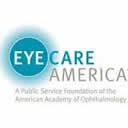Hospital Procedures
- Cataract surgery is the removal of the natural focusing lens within the eyeball when it becomes cloudy and replacement with an artificial lens implant. This is performed through a small incision with an ultrasound device which dissolves the cataract and aspirates it from the eyeball, a process called phacoemulsification. There are usually no sutures required except in special circumstances.
- Trabeculectomy is a procedure performed to reduce eye pressure in glaucoma by creation of a small opening in the wall of the eye which allows fluid within the eyeball to trickle out and collect within a small bubble of tissue (called a bleb) at the top of the eyeball. Very often a drug called mitomycin is used during the trabeculectomy surgery to prevent later scarring which would close off the opening which is created. Newer procedures are being developed including some of the procedures listed below which are used for milder cases of glaucoma and reduce the risks which accompany a trabeculectomy procedure.
- Express Shunt is a proprietary name for a device used to perform a variation on the trabeculectomy surgery technique, but which accomplishes essentially the same end result and carries a similar profile of indications and risks. The shunt is a small metallic tube which is placed in the wall of the eye to create a bypass for fluid to exit the eye.
- Trabectome is a proprietary name for equipment used to remove the wall of the internal drain of the eyeball and allow fluid to leave the eyeball more directly. The procedure performed with the Trabectome device is meant to reduce eye pressure without creating the bleb which a trabeculectomy would create, thereby trying to prevent potential problems which can sometimes arise from creation of a bleb.
- Canaloplasty is another procedure for glaucoma for reduction of intraocular pressure without formation of a bleb. It involves placing a stenting suture within the drainage canal (Schlemm’s canal) within the eyeball to increase the efficiency of drainage of fluid out of the eyeball.
- iStent is a proprietary name for a metallic stenting device which pierces the wall of the drainage canal (Schlemm’s canal) within the eyeball and allows direct shunting of fluid within the eyeball into Schlemms canal with the goal of reducing eye pressure.
- Glaucoma drainage tubes are tubes usually made from silicone which shunt fluid from within the eyeball to an external reservoir to reduce eye pressure. There are various brands and models of these devices which can be valved to limit flow through the tube or non-valved.
- Laser cyclophotocoagulation is a procedure which uses a probe to deliver laser energy directly to the part of the eye which produces fluid within the eyeball, thereby reducing the fluid produced and in turn reducing the eye pressure. This has typically been the procedure of last resort used when other glaucoma procedures fail, but newer technology is available which may permit its use for milder cases of glaucoma.
- Combined cataract and glaucoma procedures use a combination of one of the above glaucoma procedures with cataract surgery when both a cataract and glaucoma are present..








